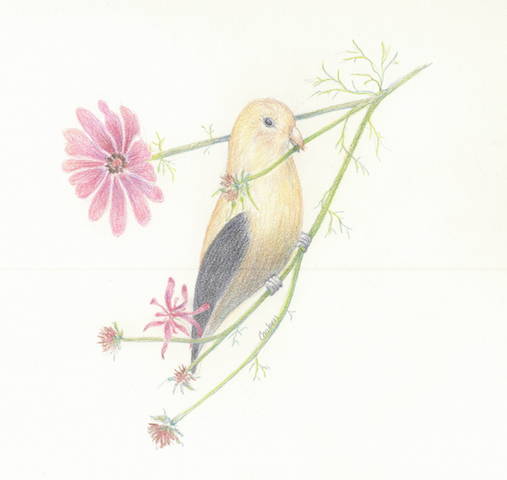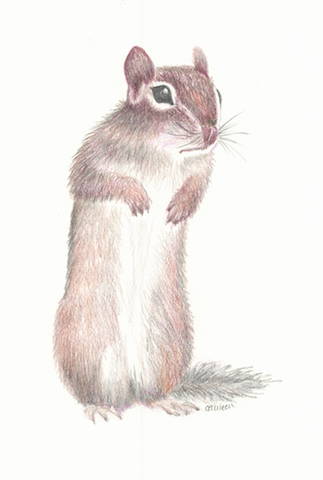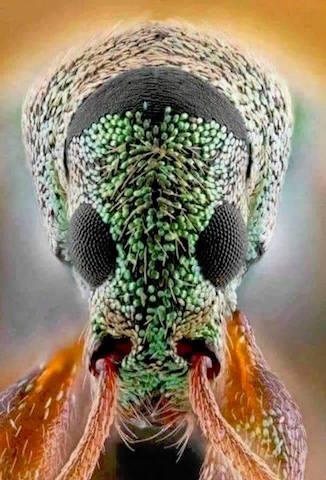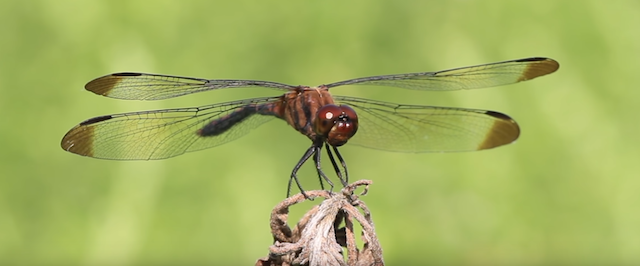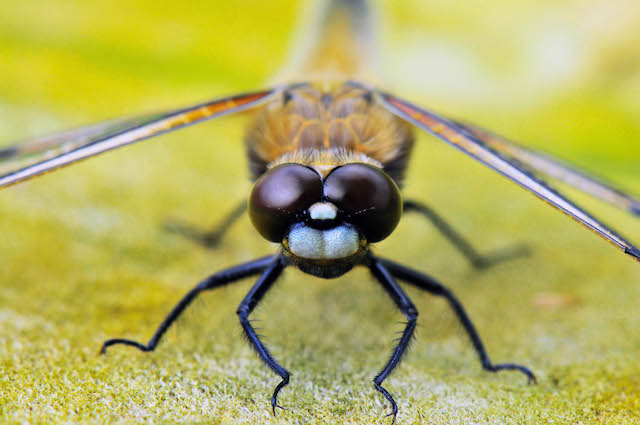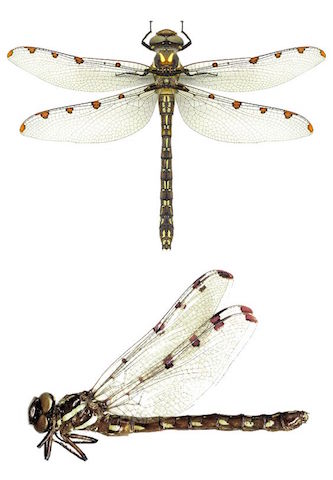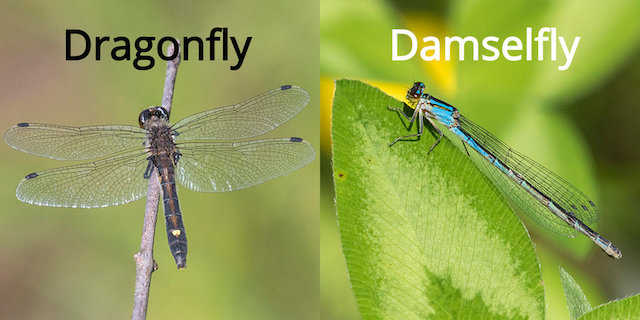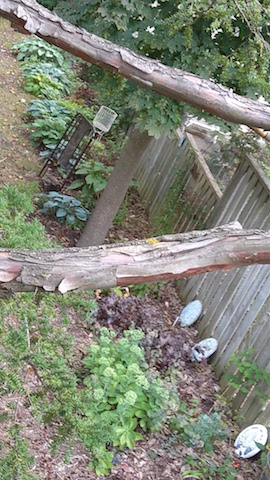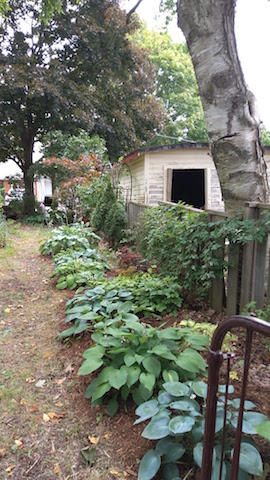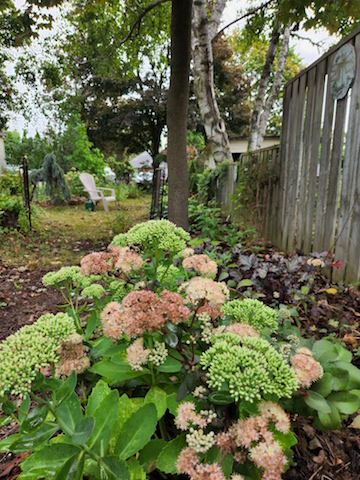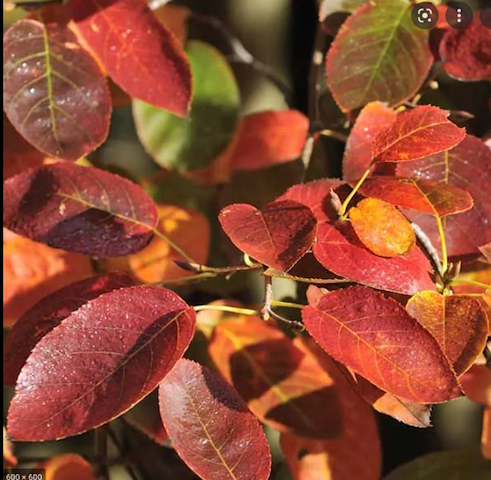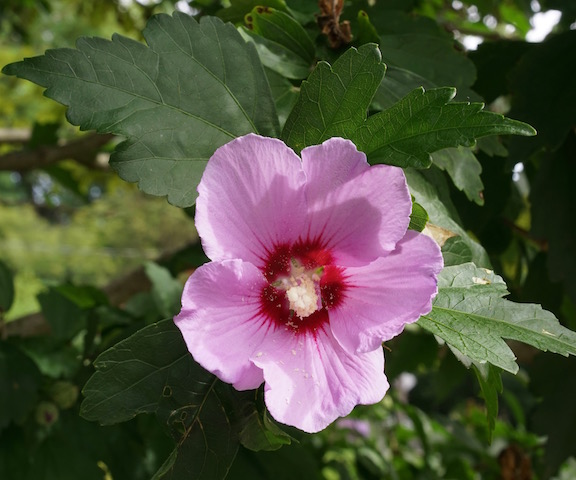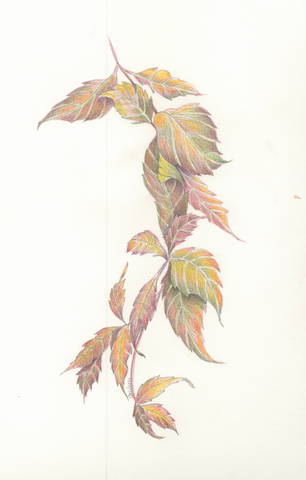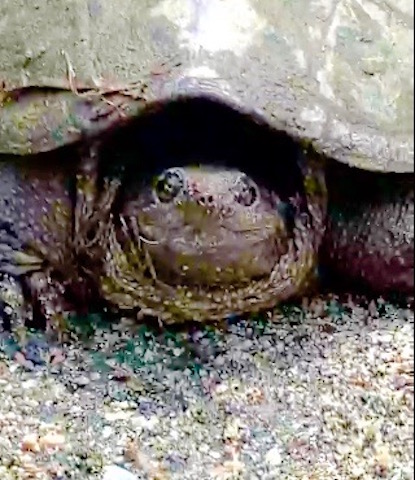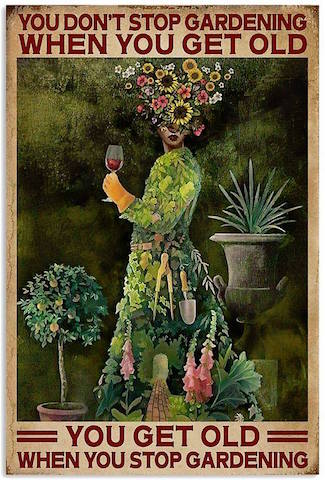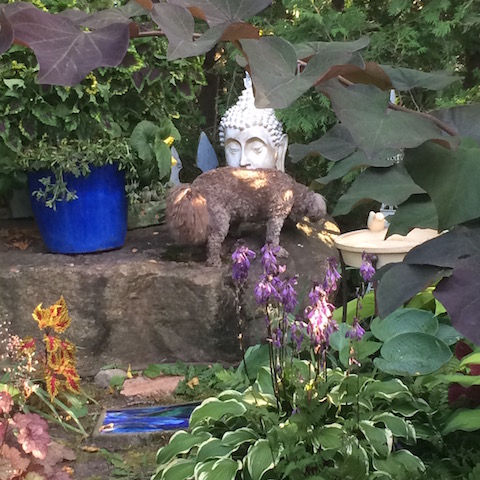| Back to Back Issues Page |
 |
|
Garden Bliss & Blunder, Issue #015 September 07, 2022 |
| I love September...
I love SeptemberSultry days slip into cool nights where shawls and warm whisky go together as we watch the sun slip away earlier.
I remember the first day of school when I had a new box of PENCILS.
Did you know that each pencil can draw a line 35 miles long?
If I had known this back then, where could I have gone with that one pencil?
Fall also means...The sweet finches are eating the Cosmos seeds. .. they land on the thin stem, and walk down to the tip where the seed head is... every day there are two... a female and a male... Good idea to leave the Cosmos for them .... feeling privileged
...and squirrels aren't the only ones who hoard nuts: the Acorn Woodpecker collects acorns (of course) and stores them high up in holes he has pecked in tree trunks...
...and there are some moles who create deep burrows with separate bedrooms,
dining rooms,pantries and bathrooms.
And we thought we were civilized.
My daughter has a theory: if she feeds the chipmunks in our garden, they'll leave the plants alone. Works so far... but $75 worth of sunflower seeds in a season could buy a few plants. We know the same one with a wonky stripe comes back each year and brings her young. eek - more mouths to feed
Cute and Cheeky... loud and demanding too.
"Please, Miss, are there more seeds??" Mosquitoes?
Oh yes, they look like this and some are still biting us for a few weeks yet, but did you know..?? This scary bug is often called the world’s deadliest animal….
(according to Ulf Pilblad who is an actor, film producer and script writer based in Bangkok, Thailand)
With an electron microscope and some other interesting devices he discovered this: On it's head are 100 eyes In it's mouth; 48 teeth In it's chest: there are 3 hearts; one for the centre and two for the wings.
In each heart: there are 2 auricles and 2 ventricles This little bug has a heat receptor - it’s how he finds warm living things and has the heat sensitivity of 1/thousandth of a degree Celsius.
It has a very advanced blood analyzer and an anaesthetic device that enables it to easily absorb blood so we victims do not instantly react to the sting. This blood analyzer also has an anticoagulant device so it can absorb the blood.
On its suction ‘pipe’ there are 6 tiny blades: 4 of them make a square incision
and with the other 2, form a tube to absorb the blood. It also has claws and hooks on its feet to hold onto its food source.
No wonder we love to slap them... ouch... and why we love
DRAGONFLIES
Dragonflies...
These are our heroes and they were here 300.000,000 years ago… - before dinosaurs There are 5,000 species worldwide: 130 in Ontario
Adults can eat 30 mosquitoes a minute (in their short 5 week lifespan - that could be 1,512,000 mosquitoes. - that’s a lot of mosquitoes!
At their larval stage, (lasting up to 5 years) they live in the water and eat what is near…. flies, mosquitoes, grasshoppers, tadpoles…
They have sharp, serrated mandibles… (in the order Odonata, it means "toothed ones"
photo: pixabay.com Dragonfly eyes merge together on their heads allowing them an almost 360 degree vision… with 30,000 lenses in each eye.
Dragonfly Wings are considered unequal because the back wings are broader than that front ...and are on the back of head These two sets of wings have muscles in the thorax that work each wing independently.
This allows them to change the angle of each wing giving them superior agility in the air at a speed of about 18 miles an hour.
One species called the globe skimmer (Pantala flavescens) flies 11,000 miles across an ocean in what's considered the world's longest insect migration
DRAGONFLIES are similar to DAMSELFLIES except dragonflies’ wings are held flat and away from the body, while damselflies hold their wings folded at rest, along or above the abdomen. (photo: Edmonton Land Trust)
Back to the GardenI asked my gardener-friend what she was doing in the garden and here is what she did and discovered...
My sincerest thanks to CLAIRE SULLIVAN for sharing what she learned. My 3 Actions ...... to renew an Out-of-control August Garden and prepare it for winter
...the "messy" Hosta Walk - before Spring and Fall are the ideal time for renovating a garden. The Hosta Walk, against a greyed wooden fence, and shaded by a mature birch and a 20-foot maple was originally planted with 50 feet of clematis, assorted hostas, buddleia, and primroses, with an Emerald Cedar at the east end in full shade and a variety of part sun, part shade heucheras, sedums, and a delphinium on the west end gets hot afternoon sun.
The east end is well shaded, but trees overhead produce roots that suck moisture. Mulched heavily with shredded leaves, winter snow keeps the spring garden cool and wet until the crocus, trilliums and primroses show up in May. The hostas arrive inch by inch to their full-leaf size by July and pink and purple clematis scrabble over the chicken-wire covered fence seeking sun to the south by peeking into the neighbour’s yard. 50 feet of cool green, mellow yellows and semi-wild clematis are enhance when the hostas add spikes of lilac blooms to the vignette.
About August 1st The Hosta Walk structure breaks down. Volunteer geraniums and Achillea mollis turn leggy and brown, and the hostas’ sunburned leaves turn the scene messy. I decided to rip it all out, refresh and renew. TIME TO RENOVATE! I consider garden beds outdoor rooms of my home. When the kitchen looks skanky, I declutter it, paint it, add new dishtowels, whatever it takes. Same deal with the Hosta Walk. I sketched what the bed would look like if I removed everything that did not thrive there. The buddleias that are sun-lovers, and the roses who’d languished for years, were easy edits, as were the volunteer geraniums, who will seed themselves and return next year anyway. Snipping off the damaged Hosta leaves and the spent blossoms took five minutes and re-edging the bed tidied the look. After watering heavily, I added composted horse manure and double-shredded cedar mulch, covering most of the faded leaves. Tweaking this shady arrangement of plants rather than clearing out and beginning over was a great choice. Haircuts and de-cluttering removed the chaos and allowed the lushly growing plants to show off their structure against the deep brown mulch.
... and after... so lovely;
Thank you Claire. When should we stop watering?
Even though the Fall is a good time to plant trees and shrubs, we still need to take special care for those we have. Plants, trees and shrubs that keep their leaves (Rhododendron, Boxwood, Beech etc) still “exhale”… or breathe out moisture even in fall and winter.
Winds will suck moisture
from them and when the ground freezes the plants cannot soak up water from the soil to replace it. WATER UNTIL THE GROUND FREEZES - add compost and mulch to protect the soil.
Consider the drying winds when you place/plant your trees or shrubs and protect them.
Fall Tree Care...Here are 4 things that need to “fall” under tree and shrub care… things to “un-do” - according to Dr. Bonnie Lee Appleton, professor of horticulture at Virginia Tech University in Blacksburg
She calls it “unplanting”… 1 - Unstake (and untie) 2 - Unwrap 3 - Unmulch 4 - Unbind
UNSTAKE and UNTiE When planting a tree, it only needs to be staked if it cannot stand upright by itself (or perhaps needs protection from wind or people. If it needs staking, a year is plenty of time. if its roots cannot hold it up after a year, there is likely another problem - poor soil conditions or poor roots and staking will not fix this. Trees planted without stakes develop trunk girth faster and stronger, giving it strength to stand up straight when buffeted by wind… even staked trees should never be held rigidly in place. UNTIE: - so the tying material does not damage the bark (it restricts water and nutrients moving up the trunk), declining growth and creating a possible weak spot that could later break. Remove labels or tags that can be absorbed by growth.
UNWRAP Take off any protection from the trunk when planted. This is unnecessary except in striations like protecting it at digging or shipping time and sometimes used for heat protection if trees are planted in paved areas. The wrap can also rot the bark, and cause trunk’s breathing pores to enlarge making entrances for insect and disease problems. Sometimes a trunk needs protection from machinery, animal feeding or vandalism with a metal or plastic guard which should be loose and not touching the bark.
UNMULCH Just pull back the mulch about 4 inches away from the trunk as it can promote bark decay, disease or insect issues. More than 3 or 4 inches of mulch can make a cozy home for voles or other beasts that will munch on the softened bark. The root flare should be at the soil’s surface… if not, pull away the soil to reveal it. No mulch "volcanoes". UNBIND All root balling materials like natural or synthetic burlap, hemp or synthetic ropes, as much of the wire baskets as possible, plastic sleeves or pots. They restrict root growth and development. Even those so-called ‘plantable’ pots will not biodegrade fast enough and their fibres soak up the moisture before it gets to the roots. A beautiful Pause...
This gorgeous Hibiscus bloom from my friend and photographer, Ron... see his stunning work at @sheldrickron Virginia Creeper...VIRGINIA CREEPER, or five-leaved ivy (Parthenocissus quinquefolia), is a woody vine native to eastern and central North America, in southeastern Canada (Ontario) It can be a bit of a thug, taking over gardens by rooting itself along the stems or climbing walls, fences and hedges. We used it to cover a chain link fence for a wind break and some privacy... but in our garden, it is sneaking up our Cedar hedge and is not instantly visible until it begins to turn brown in my sketch below. Easy to see then pull or dig: diligence will control it.
Watch for Turtles...
I love Turtles. They are incredibly intelligent animals, that feel fear, contentment, and pain. They have an incredible way of navigating that is supported by earth magnetics, the sun and even the weather. At this time of year turtles are heading back to their hibernation sites and many will return within 1 metre of where they hibernated the year before. They will be crossing major roads. Every turtle in southern Ontario crosses an average of 12 roads every year. Please be aware of turtles on roads. TURTLES ARE ONE OF THE OLDEST SPECIES ON THE PLANET. They have survived five mass extinctions. But now 75% of the worlds turtles are headed towards extinction.
What to do with an injured Turtle.An injured turtle needs medical attention as soon as possible!
CALL US IMMEDIATELY at 705-741-5000 (Peterborough area) HOW TO HELP AN INJURED TURTLE: 1. Carefully place the injured animal in a well-ventilated plastic container with a secure lid (turtles can climb!), and no water. NOTE: Most turtles can be picked up carefully with two hands. When handling snapping turtles keep a safe distance from their head as they will snap at you if they feel threatened. You may want to use a shovel or board to lift the turtle. Watch our video clip for more tips for handling turtles. 2. NOTE THE LOCATION: (road, major intersection, kilometer marker) where the turtle was found to ensure it can be released according to provincial regulations. 3. Call us at 705-741-5000. If we don’t answer, leave us a message and we will get back to you as soon as possible. Note: DO NOT EMAIL with information about an injured turtle. An injured animal needs medical attention as soon as possible. 4. Do not offer the turtle water or food, and do not try to treat the turtle in any way. 5. Wash your hands after handling the animal. 6. If you have to keep a turtle overnight, leave it in the well-ventilated container. Place it in a location that is dark, quiet, room temperature, and away from pets. AND MORE INFO IN THE LINK BELOW:
Whew... there is a lot in this newsletter and I hope you find time to read it... If you have any questions or suggestions, p lease let me know.
...and a little reminder....
'so long' for now...
but remember this... there is still plenty of warm days, sunshine, rain
and rest time in the garden
Lucy wants to remind Chippie
the seeds are on the rock. Just a reminder...My book (and on-line course) on roses is progressing and there are a lot of chapters on pruning. .. if any of you have any questions, issues or problems with your roses. .. trouble understanding something you have read, tried or want to try. Ask me. .. if I don't know, I will find out
... because likely others have the same questions,
issues or problems...
send me an email at cauleensgardens@gmail.com and thanks.
Back Issues for Garden Bliss & Blunder |
| Back to Back Issues Page |

